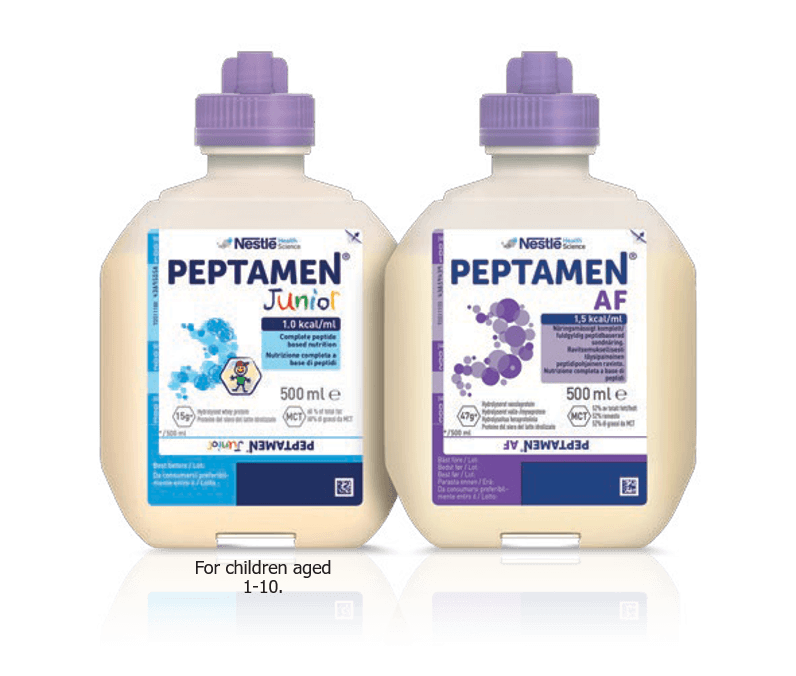TUBE FEEDING INTOLERANCE
TROUBLESHOOTING GUIDE
Diarrhea
Check for:
Tube position ❯
POSSIBLE SOLUTIONS
Check for proper placement (e.g., naso-gastric tube has not migrated into small bowel)
Medication side effects ❯
POSSIBLE SOLUTIONS
Evaluate medications (e.g., broad spectrum antibiotics, hyperosmolar or sorbitol containing meds, prokinetics, laxatives)3; consult pharmacist
Clostridium Difficile infection ❯
POSSIBLE SOLUTIONS
Rule out infectious etiology and treat if necessary2,3
Rapid infusion rate ❯
POSSIBLE SOLUTIONS
Review feeding regime, reduce rate/volume or adjust feeding schedule as needed, use room temperature formula3
Bacterial contamination of feeding solution ❯
POSSIBLE SOLUTIONS
Review enteral feeding and equipment handling procedures – using aseptic technique to reduce the risk of touch contamination; follow hang time guidelines; consider closed feeding system3,6
Malabsorption, maldigestion, steatorrhea ❯
POSSIBLE SOLUTIONS
Perform medical exams and testing if needed, review fat content of formula, consider peptide based, high MCT/LCT ratio formulas3
Underlying GI disorders, gastroenteritis or flu ❯
POSSIBLE SOLUTIONS
Assess and treat underlying illnesses; focus on fluid needs; consider peptide based formulas with MCT in the lipid blend3
Fecal Impaction/ Constipation ❯
POSSIBLE SOLUTIONS
Assess abdomen; disimpact as needed using enemas; monitor stool frequency and consistency3
Formula characteristics ❯
POSSIBLE SOLUTIONS
Consider fibre unless contraindicated (may contribute to distension) and assess fluid needs3, consider peptide-based formula2,11 if feeding at high rates or into the small bowel consider lower osmolality formula3,12

